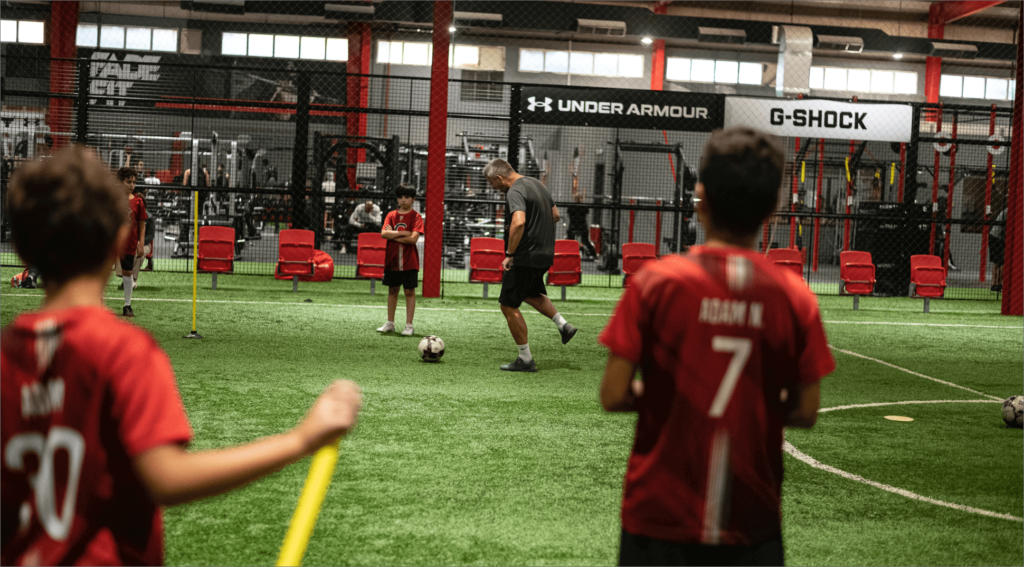How to Warm Up for Football
Football is a game of skill, strategy, and stamina. But before the first whistle blows, there’s a crucial step that sets the tone for the entire match: the warm-up.

A well-executed warm-up prepares your body for the physical demands of the game. It increases blood flow, warms up the muscles, and enhances flexibility. This not only boosts your performance but also reduces the risk of injuries.
But how do you warm up effectively for football? What exercises should you include? How long should your warm-up last? These are some of the questions we’ll answer in this comprehensive guide.
We’ll delve into the science of warming up, explore dynamic and static stretching, and highlight football-specific drills. We’ll also discuss the psychological benefits of a structured warm-up routine and the importance of cooling down.
Whether you’re a player, a coach, or a fitness enthusiast, this guide will equip you with the knowledge to warm up for football like a pro.
The Critical Importance of a Proper Football Warm-Up
A proper warm-up is not just a pre-game ritual. It’s a critical component of your performance on the field. Gradually increasing your heart rate and blood flow prepares your body for the game’s intensity.
Moreover, a well-structured warm-up enhances your flexibility, agility, and coordination. It also plays a significant role in injury prevention. Warming up your muscles and joints makes you less likely to suffer from sprains, strains, and other common football injuries. A good warm-up sets the stage for a successful game.
Dynamic Stretching vs. Static Stretching: Understanding the Difference
Dynamic stretching and static stretching are two critical components of a comprehensive warm-up routine. But what’s the difference between the two? Dynamic stretching involves moving parts of your body and gradually increasing reach, speed of movement, or both. It’s ideal for preparing your muscles for the specific movements they’ll be performing during the game.
On the other hand, static stretching involves stretching a muscle to its furthest point and then holding that position. While it’s beneficial for increasing overall flexibility, saving static stretches after the game is generally recommended to help cool down and prevent muscle stiffness.
Dynamic Stretching Exercises for Football Players
Dynamic stretching exercises are designed to mimic the movements you’ll be making on the field. They’re an excellent way to prepare your muscles for the game ahead. Here are a few examples:
- Leg swings: Stand next to a wall or a pole for support and swing one leg forward and backward. Repeat with the other leg.
- Arm circles: Extend your arms to your sides and make small circles with them, gradually increasing the size of the circles.
- High knees: March in place, lifting your knees as high as possible with each step.
- Butt kicks: Jog in place, kicking your heels up to your glutes with each step.
- Walking lunges: Take a step forward with your right foot and lower your body into a lunge. Push off with your right foot and forward your left foot into the next lunge.
Remember, dynamic stretching aims to warm up your muscles and increase your range of motion. So, focus on controlled, smooth, and deliberate movements.
Static Stretching: When and How to Implement
While dynamic stretching is best for warming up, static stretching still has a place in your football routine. It’s best used after the game to help your muscles cool down and recover. Holding stretches for 15-30 seconds can help reduce muscle stiffness and soreness after the game.
However, it’s important to remember that static stretching should never be used as a standalone warm-up. If performed before the game, it can actually decrease muscle strength and power. So, save those static stretches for your post-game routine and focus on dynamic stretches for your warm-up.

Football-Specific Drills to Incorporate into Your Warm-Up
Incorporating football-specific drills into your warm-up routine can help you prepare for the game more effectively. These drills are designed to mimic the movements and skills you’ll be using on the field, helping you warm up your muscles and improve your technique simultaneously.
Here are a few examples of football-specific drills you can include in your warm-up:
- Passing drills: Practice short and long passes with a partner to strengthen your legs and improve accuracy.
- Dribbling drills: Dribble the ball around cones or markers to improve control and agility.
- Shooting drills: Practice shooting at a goal to warm up your legs and improve your shooting technique.
- Defensive drills: Practice tackling and intercepting passes to strengthen your legs and improve your defensive skills.
Remember, these drills aim not to exhaust you before the game but to prepare your body and mind for the movements and skills you’ll use on the field.
Ball Work as Part of the Warm-Up
Incorporating ball work into your warm-up routine can help you prepare for the game more effectively. It lets you get a feel for the ball and practice your skills before the game starts.
Start with simple exercises like passing the ball back and forth with a partner or dribbling the ball around cones. As you get warmer, you can incorporate more complex exercises like shooting or defensive drills.
Remember, the goal of ball work in your warm-up is not to exhaust yourself but to prepare your body and mind for the game. So, keep the intensity low and focus on technique and control.
The Role of Plyometrics in Preparing for Explosive Movements
Plyometrics, or jump training, is crucial in preparing football players for the explosive movements they’ll perform during the game. These exercises help to increase power, speed, and agility, all of which are essential for a successful performance on the field.
Incorporate plyometric exercises such as box jumps, burpees, or squat jumps into your warm-up routine. These exercises will help activate your fast-twitch muscle fibers, preparing your body for the high-intensity, explosive movements you’ll perform during the game. Remember to perform these exercises with proper form to avoid injury and maximize effectiveness.
Psychological Benefits of a Structured Warm-Up Routine
A structured warm-up routine does more than prepare your body for a football game. It also has significant psychological benefits. A well-planned warm-up can help reduce anxiety, improve focus, and boost confidence, setting you up for a successful performance on the field.
Incorporating visualization techniques into your warm-up can further enhance these psychological benefits. Visualizing successful plays or movements can improve your performance and confidence. Remember, a successful warm-up routine addresses physical and mental readiness for the game.
Tailoring Your Warm-Up to Weather Conditions and Playing Surfaces
The weather conditions and playing surface can significantly impact your warm-up routine. For instance, you may need more time warming up in colder weather to ensure your muscles are adequately prepared for the game.
Similarly, different playing surfaces may require adjustments to your warm-up routine. For example, a softer surface, like grass, might need more focus on balance and stability exercises, while a more rigid surface, like artificial turf, might necessitate additional joint mobility exercises.
The Importance of Cool Down: An Extension of the Warm-Up
Just as a proper warm-up prepares your body for the intensity of a football game, a cool-down routine is equally important in helping your body recover post-game. It aids in gradually reducing your heart rate and helps to prevent muscle stiffness and soreness. Moreover, a cool-down routine can also help to flush out lactic acid build-up in the muscles, reducing the risk of muscle cramps and injuries. It’s an essential part of your football routine, bridging intense physical activity and normal rest, ensuring a healthy recovery process.
